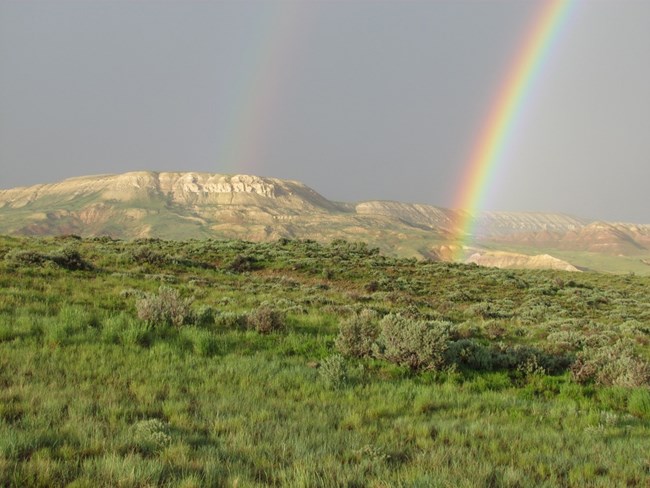
NPS Photo / John Collins
Overview
Fossil Butte National Monument was established in 1972 to protect and preserve a portion of the Green River and Wasatch formations which contain a unique fossilized assemblage of organisms that once lived in or around Fossil Lake, an ancient lake of Eocene age. Many other clues to the environment of Fossil Lake and its environs are also preserved in the Wasatch and Green River formations. The boundary of the monument encompasses high, cold desert lands dominated by sagebrush steppe vegetation.The Fossil Butte National Monument Vegetation Inventory Project delivers many geospatial and vegetation data products, including an in-depth project report discussing methods and results, which include descriptions to vegetation associations, field keys to vegetation associations, map classification, and map-class descriptions. The suite of products also includes a database of vegetation plots, and accuracy assessment (AA) sites; digital images of field sites; digital aerial imagery; digital maps; a contingency table listing AA results; and a geodatabase of vegetation, field sites (vegetation plots, and AA sites), aerial imagery, project boundary, and metadata.
Products
The products of vegetation mapping projects are stored and managed in the National Park Service's Data Store, a repository for documents and publications relating to park resources. From the highlighted items below, click on the type of information you are looking for.
Last updated: October 9, 2018
